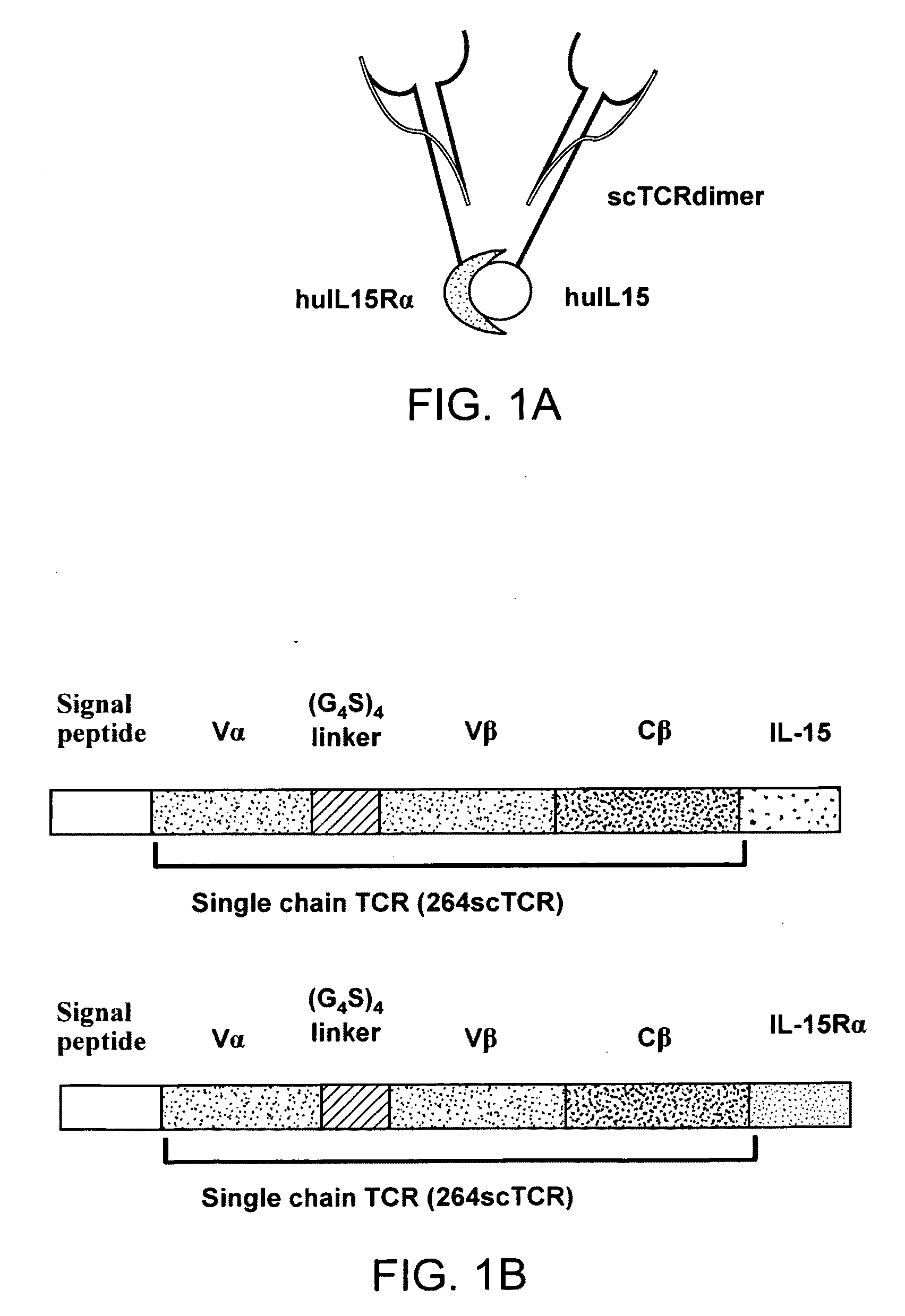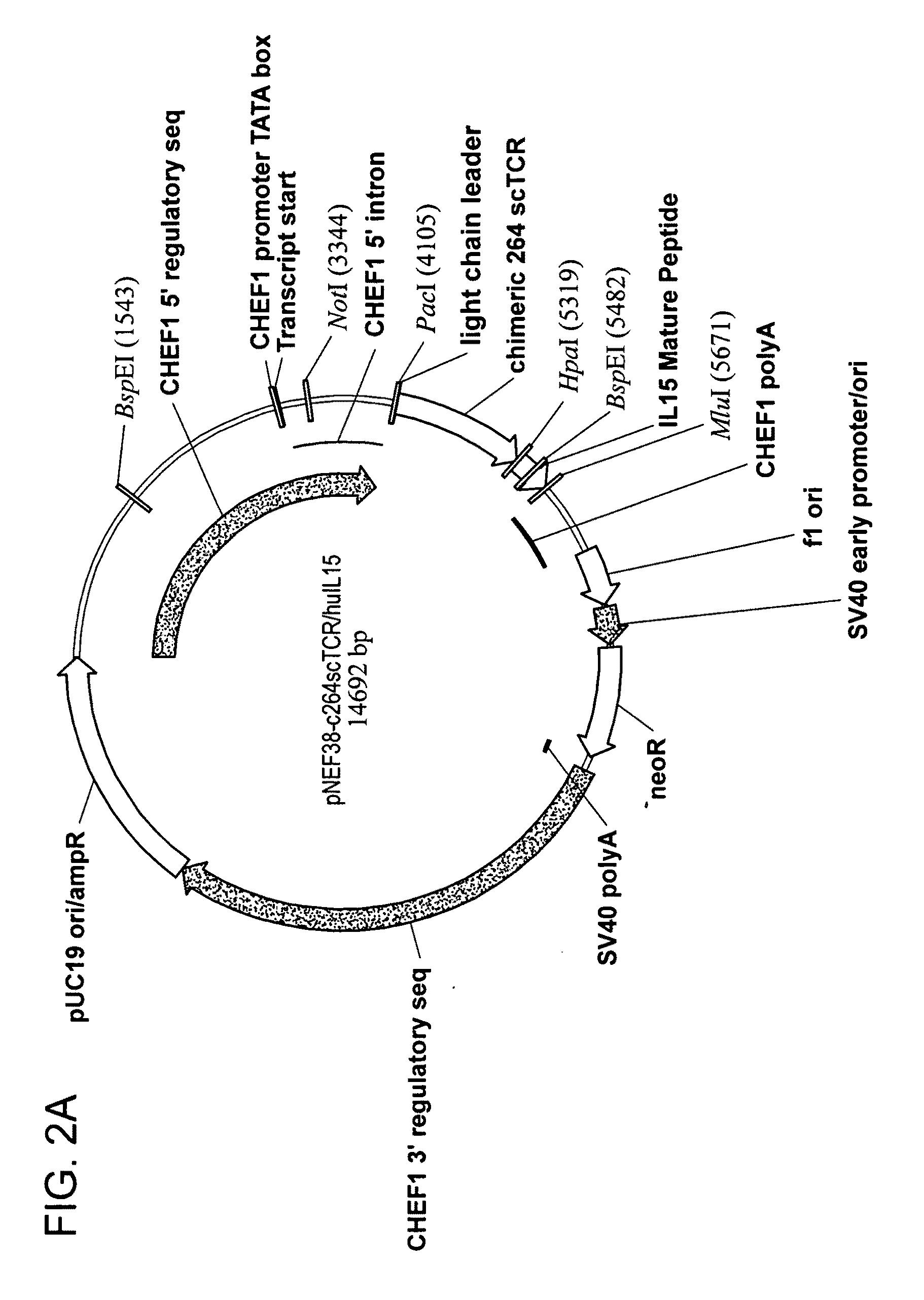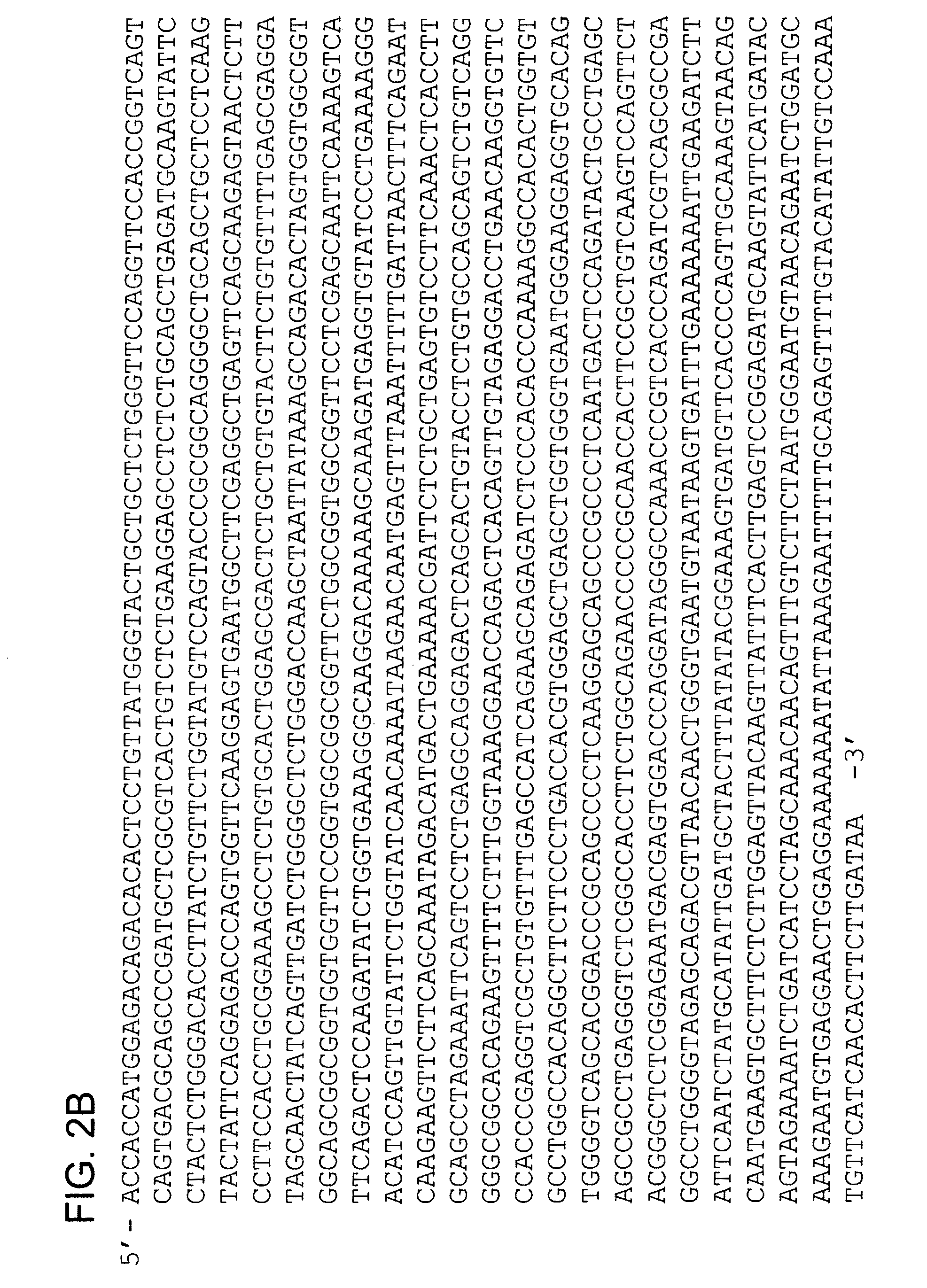Fusion molecules and IL-15 variants
- Summary
- Abstract
- Description
- Claims
- Application Information
AI Technical Summary
Benefits of technology
Problems solved by technology
Method used
Image
Examples
example 1
Design of a Fusion Protein Complex Comprising scTCR / huIL15 and scTCR / huIL15Rα Fusion Proteins
[0190]It has been established that the IL-15 stably binds to the extracellular domain of the IL-15Rα and that the resulting complex is capable of modulating (i.e. either stimulating or blocking) immune responses via the intermediate or high affinity IL-15R complex (1-4). In addition, it has been demonstrated that single-chain TCR or antibody polypeptides can be fused to cytokines and other immune effector domains and that such bispecific fusion molecules retain functional activity of both fusion domains (5-8). Further, it has been shown that multivalent forms of the TCR provide enhanced binding to their ligands (9). Therefore a feature of the invention provides for a fusion protein complex comprising at least one fusion protein wherein a first TCR polypeptide is fused to IL-15 and at least one fusion wherein a second TCR polypeptide is fused to the extracellular domain of IL-15Rα, such that ...
example 2
Construction of the c264scTCR / huIL15 Gene Fusion in an Expression Vector
[0192]Isolation and characterization of TCR genes for the p53 (aa264-272)-specific TCR were described previously (5-7). To obtain the human IL15 and IL15Rα genes, human PBMC were isolated from 200 mL of blood of a donor (Lot#2238789, Community Blood Bank, Miami, Fla.) with HISTOPAGUE-1077 (Sigma). The cells (1.5×107) were activated by 30 ng / ml of PMA (Sigma), 200 ng / ml of ionomycin, and 220 ng / ml of recombinant human IL2 in IMDM containing 10% FBS in a CO2 incubator for 10 days. The activated cells (1×107 per mL) were frozen at −70 C for the further applications. To purify the total RNA from the activated PBMC, RNEASY PLUS MINI (Qiagen) was used according to the manufacturer's protocol. Human IL15 gene containing the coding region and a portion of 5′ and 3′ flanking regions was amplified from the total RNA with the front primer
5′-CACCTTGCCATAGCCAGCTCTTC-3′
and the back primer
5′-GTCTAAGCAGCAGAGTGATGTTTG-3′
by SUPER...
example 3
Construction of the c264scTCR / huIL15 Gene Fusion Containing a Mutated Human IgG1 Hinge Region in an Expression Vector
[0193]Construction of the pNEF38-c264scTCR / huIL15 vector was described at Example 2. A mutated hinge region from human IgG1 H chain where three cysteine residues were substituted with three serine residues was used to link c264scTCR and huIL15. The hinge region was mutated and amplified from 264scTCR / IgG1 gene described previously (7) with the front primer
5′-TGGTGGGTTAACGAGCCCAAATCTTCTG-3′
and the back primer
5′-ATTATTACGCGTTGGAGACGGTGGAGATG-3′
by PfuUltra (Stratagene) under following PCR conditions: 94 C, 30 sec; 65 C, 30 sec; 70 C 1 min; ×35 cycles; 72 C, 10 min. The 70 bp mutated human IgG1 hinge PCR-cDNA product was separated by electrophoresis on a 1% agarose gel and isolated. The cDNA product was purified from agarose with a Qiaquick Gel Extraction Kit (Qiagen). The mutated hinge region gene was digested with HpaI and MluI and ligated into pNEF38-c264scTCR which ha...
PUM
| Property | Measurement | Unit |
|---|---|---|
| Solubility (mass) | aaaaa | aaaaa |
| Nucleic acid sequence | aaaaa | aaaaa |
Abstract
Description
Claims
Application Information
 Login to View More
Login to View More - R&D
- Intellectual Property
- Life Sciences
- Materials
- Tech Scout
- Unparalleled Data Quality
- Higher Quality Content
- 60% Fewer Hallucinations
Browse by: Latest US Patents, China's latest patents, Technical Efficacy Thesaurus, Application Domain, Technology Topic, Popular Technical Reports.
© 2025 PatSnap. All rights reserved.Legal|Privacy policy|Modern Slavery Act Transparency Statement|Sitemap|About US| Contact US: help@patsnap.com



